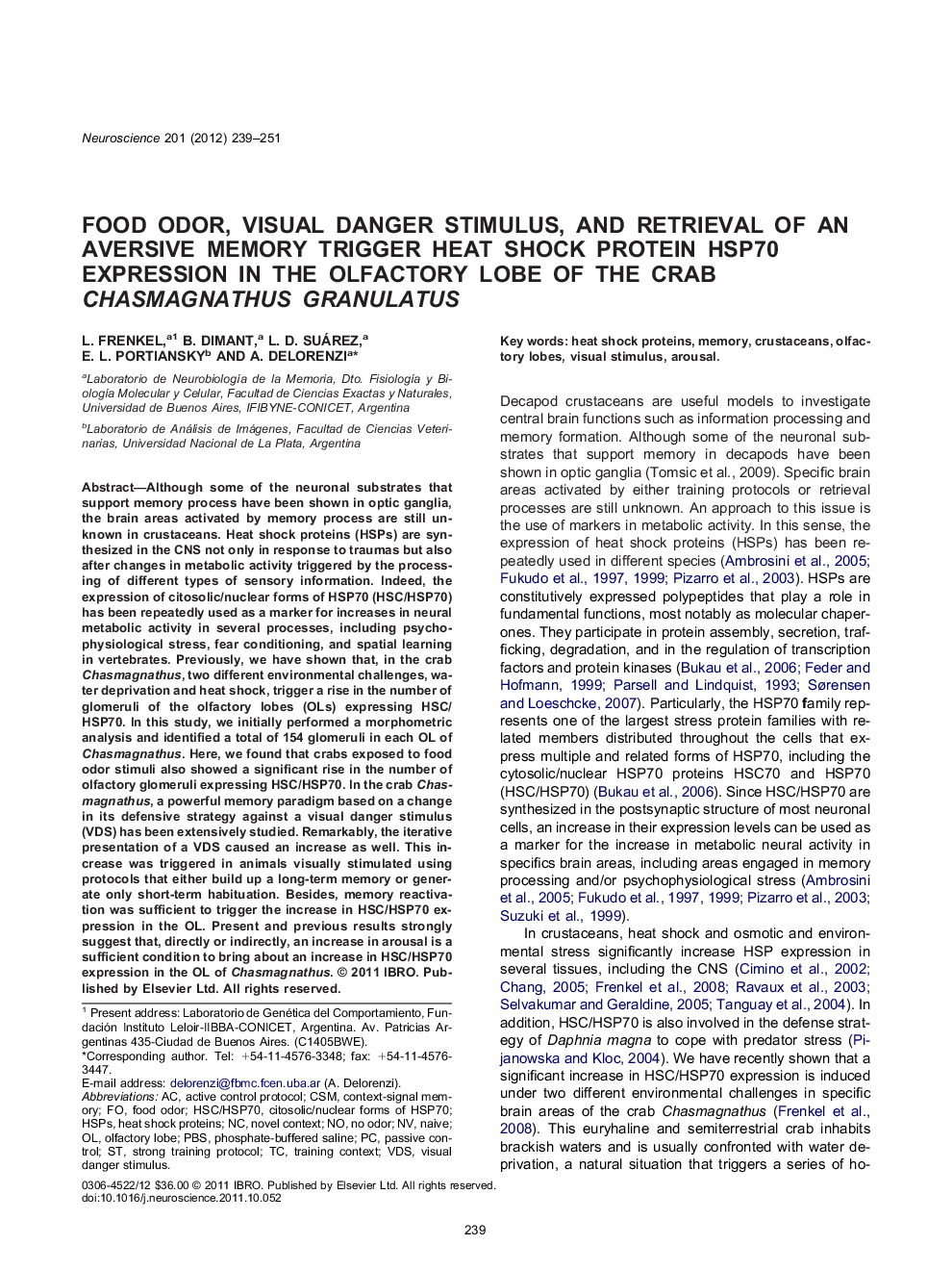| کد مقاله | کد نشریه | سال انتشار | مقاله انگلیسی | نسخه تمام متن |
|---|---|---|---|---|
| 4338558 | 1614875 | 2012 | 13 صفحه PDF | دانلود رایگان |

Although some of the neuronal substrates that support memory process have been shown in optic ganglia, the brain areas activated by memory process are still unknown in crustaceans. Heat shock proteins (HSPs) are synthesized in the CNS not only in response to traumas but also after changes in metabolic activity triggered by the processing of different types of sensory information. Indeed, the expression of citosolic/nuclear forms of HSP70 (HSC/HSP70) has been repeatedly used as a marker for increases in neural metabolic activity in several processes, including psychophysiological stress, fear conditioning, and spatial learning in vertebrates. Previously, we have shown that, in the crab Chasmagnathus, two different environmental challenges, water deprivation and heat shock, trigger a rise in the number of glomeruli of the olfactory lobes (OLs) expressing HSC/HSP70. In this study, we initially performed a morphometric analysis and identified a total of 154 glomeruli in each OL of Chasmagnathus. Here, we found that crabs exposed to food odor stimuli also showed a significant rise in the number of olfactory glomeruli expressing HSC/HSP70. In the crab Chasmagnathus, a powerful memory paradigm based on a change in its defensive strategy against a visual danger stimulus (VDS) has been extensively studied. Remarkably, the iterative presentation of a VDS caused an increase as well. This increase was triggered in animals visually stimulated using protocols that either build up a long-term memory or generate only short-term habituation. Besides, memory reactivation was sufficient to trigger the increase in HSC/HSP70 expression in the OL. Present and previous results strongly suggest that, directly or indirectly, an increase in arousal is a sufficient condition to bring about an increase in HSC/HSP70 expression in the OL of Chasmagnathus.
▶The brain areas activated by memory process are still unknown in crustaceans. ▶A total of 154 glomeruli in each olfactory lobe of the crab Chasmagnathus were identified. ▶Different stimuli increase HSP70 expression in Chasmagnathus olfactory lobe: water shortage, heat, food odor, a visual danger stimulus, and a memory reactivation. ▶An increase in arousal is a sufficient condition to bring on this HSP70 expression.
Journal: Neuroscience - Volume 201, 10 January 2012, Pages 239–251